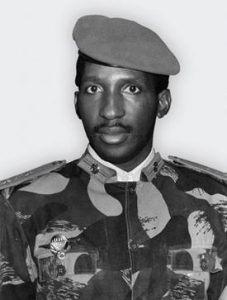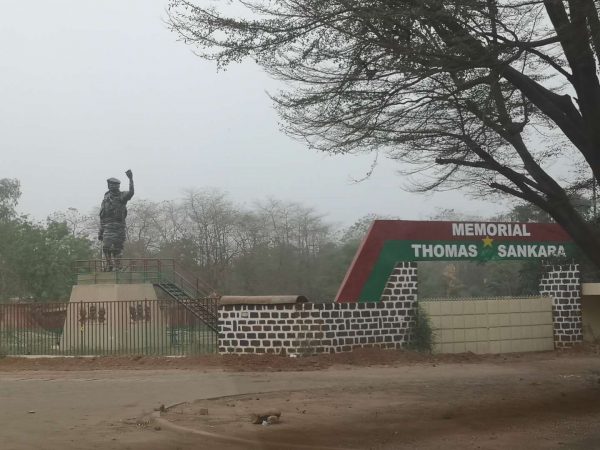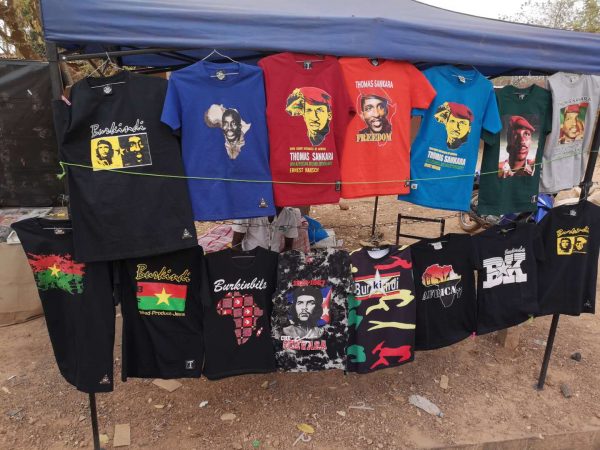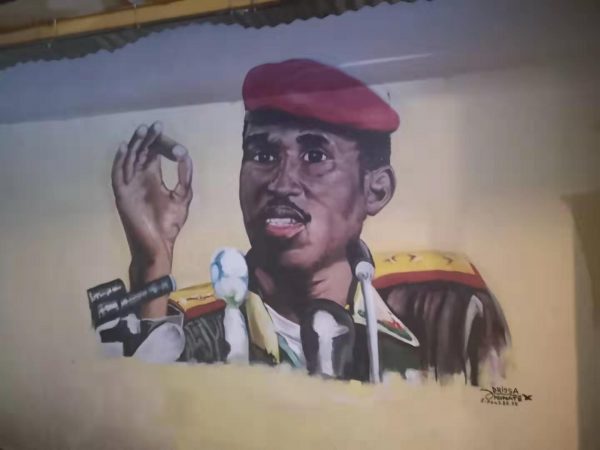When it comes to communist figures, we at YPT are extreme geeks. While some figures are known by pretty much everyone, such as Lenin, Stalin and Fidel Castro some, because their influence was less felt in the western world, are not mentioned as often. Such is the figure of Thomas Sankara, often called Africa’s Che Guevara. Sankara was a revolutionary throughout most of his life and became the president of Burkina Faso, called Upper Volta before he himself renamed it.
A brief biography of Thomas Sankara

Born Thomas Isidore Noel Sankara in the town of Yako, northern Burkina Faso, it seemed like the young man was destined to become a priest. He had brilliant grades in his school, in Bobo-Dioulasso and was an excellent students. Just as he signed up to join the seminary, he decided to turn around completely and instead joined up the military. He did so by entering the military academy of Kadiogo in Ouagadougou. It is there that he was introduced to progressive ideas through informal classes that one of his civilian teachers, Adama Touré, was giving secretly to a group composed of his best students. There, he learned about communism as well as the Chinese Revolution and the Soviet Revolution.
It is during his military service that he met fellow soldiers who would later all spearhead with him what would be the revolution of the Upper Volta. Amongst these fellow soldiers was a certain Blaise Compaoré who would become his closest ally, before backstabbing him. With these fellow leftist officers, he created the Regroupement des Officiers Communistes, a secret cell of communist sympathisers within the army of the Upper-Volta.
Sankara became president of Upper Volta in 1983, when he was 33 years old. He led the country until his death in 1987. As his rule was characterised by bad relationships with nearby countries still loyal to Europe, pressure became too much and a coup was organised by 12 of his most trusted officials, led by his long-time comrade, Blaise Compaoré. Blaise Compaoré assumed the Presidency then, and did all he could to snuff the memory and policies of Sankara. Compaoré had to flee to the Ivory Coast in 2015 after multiple coup attempts and uprisings threatened him.
Legacy of Thomas Sankara

From day one of his presidency, Sankara undertook the task of transforming the country radically. Not only did he change its symbols, such as its name, flag and anthem (which he wrote himself) but he also undertook radical reforms of the society. He dismantled tribal systems and traditions, causing the ire of many, but at the same time brought the country towards gender equality (outlawed female genital mutilation, forced marriages and polygamy) and great improvements in healthcare (vaccination and construction of hospitals). It might have been that Sankara’s project was undermined by the people under him with some of the People’s Tribunals turning extremely corrupt very quickly. Sentences were harsh, with some of the non-productive workers forced into a form of temporary slavery or unpaid work. Unions and members of the old regime were harshly persecuted.
At the center of Sankara’s policies was the idea of self-sufficiency (which can be compared to the Juche idea, in some ways) with the idea that if Africa accepts foreign aid from the West, it will always be servile to the West. Sankara broke up with any form of foreign aid and promoted hard work to make Burkina Faso produce everything it needed by, for example, redistributing the land to the peasants.
Sankara was also extremely humble, limiting his possessions to a handful of things, changing the fancy vehicles of the ministers for the cheapest available car and constantly living in his simple military clothes.
In the four years under Sankara, Burkina Faso became a completely different country. For example, the literacy rate of Burkina Faso went from 13% to 73% during his tenure. After his execution, however, a lot was done to erase anything Sankara had done, but his memory and some of his policies have been kept and remembered throughout West Africa. Now that Blaise Compaoré was overthrown, the figure of Thomas Sankara is being restored in Burkina Faso, with progressively more thinkers claiming to be in his lineage and his face becoming an inspiring popular icon.
Why is he called the Che Guevara of Africa?

Thomas Sankara is often called the Che Guevara of Africa, while some of the reasons for that, like the fact that they were both communists, are obvious, there are numerous parallels between the two figures.
Both Guevara and Sankara were raised in mid-upper class family. Sankara lived in a brick house, which was a luxury for that area. Both were also intellectuals, with Guevara a doctor and Sankara a top student. Both were also radical revolutionaries who ended up swallowed by the apparatchiks of their fellow governments and moderates. Both romantics in their anti-imperialist struggle, on one side Guevara felt like he had to leave Cuba and go liberate other places as he was becoming more and more of a token figure rather than a active-decision maker. Sankara, less lucky, was executed by the same revolutionaries who propped him up. Sankara was a musician and Guevara is often pictured on his motorcycle, both having this bohemian vibe going for them and renowned for being extremely charismatic, leading both of them to become the t-shirt and poster pop icons we all have seen.
Another interesting aspect of the relationship between Sankara and Guevara is that Sankara was deeply inspired by the Cuban revolution. Under his rule, the motto of Burkina Faso became ‘’La Patrie ou la Mort, Nous Vaincrons’’ a direct traduction of ‘’Patria o muerte, vinceremos’’ which is still to this day the motto of Cuba. Sankara established Committee for the Defense of the Revolution just like the ones that can be found in Cuba, where local people are asked to watch and surveil the activities of their fellow workers and neighbours, to make sure that no counter-revolutionary activity happens.

Although his presidency was very short-lived, Thomas Sankara is still an immense figure in the spirit of Africa. He might have been very controversial but he also represent an ideal of anti-imperialism in the mind of many. To this day, it is impossible to travel around West Africa without seeing a mural of the man, t-shirts with his face or hearing songs about him.





